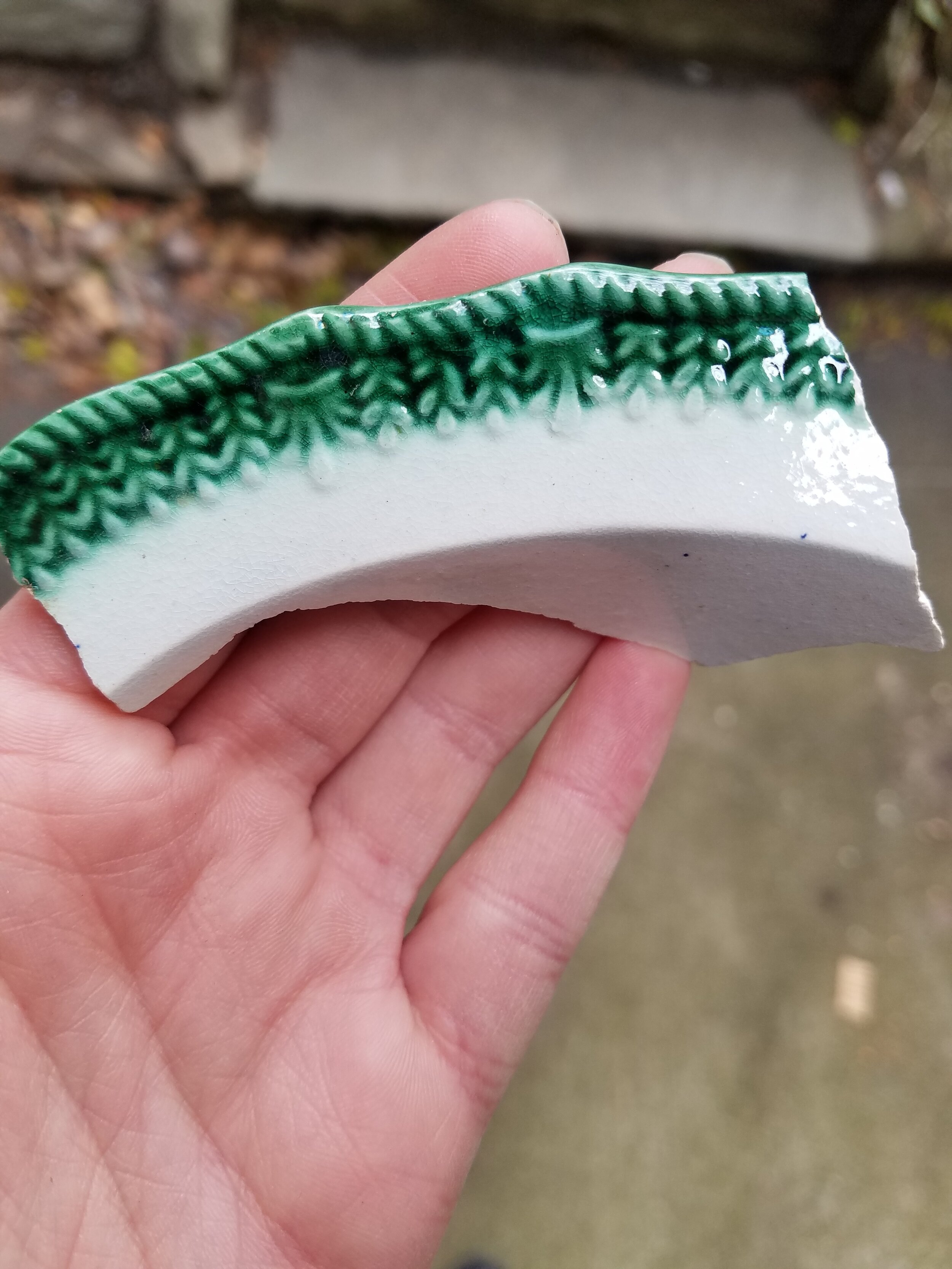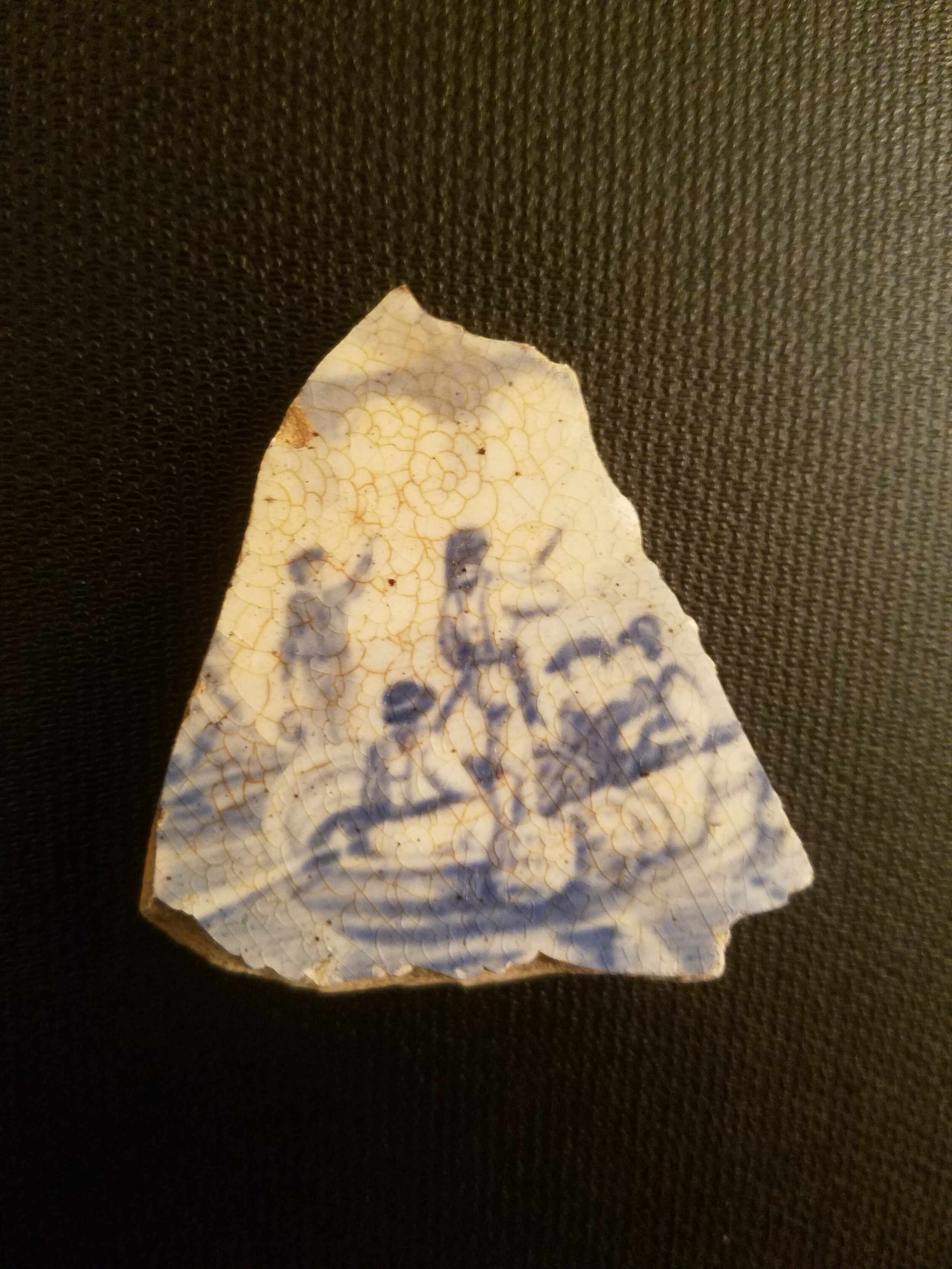These redware vessels were recovered from sub-floor deposits in a c. 1690-1720s dwelling/slave quarter/out-kitchen in Burlington County. The building was the first home at the site to the affluent Quaker Restore Lippincott family from about 1690 to 1700 when a second larger dwelling was built leaving the first building to serve as a slave quarters and out-kitchen. This building also contained the engraved bone needle case features on January 22, 2020. The right vessel is a portion of an Essex Post-medieval Fine Redware storage pot with a light lead glazed and thumb-impressed decorated exterior. This ware dates to the early to mid-seventeenth century.
The right vessel is a small collared bowl, a vessel style common on sixteenth to early eighteenth-century sites in England and early colonial areas. The interior decoration includes slip-trailed rings and a bird design at its center. Oxidized copper or brass filings added some green color to the decoration. The bird could represent a phoenix or peacock. Peacocks, while they didn't seem to be tasty, were features on estates and they were occasional foods for affluent people due to the novelty or exclusivity of the bird. The two redware vessels speak to the age of the site and the owner's connection to England.
📸: Allison Gall
📩: Adam Heinrich and Danielle Cathcart



















